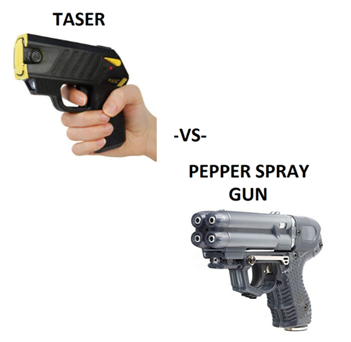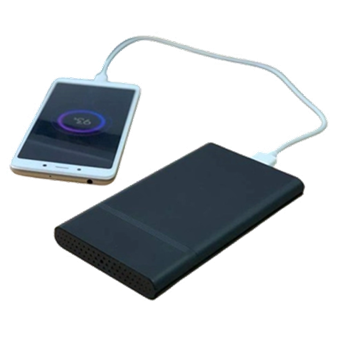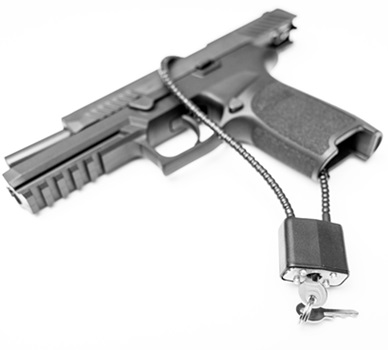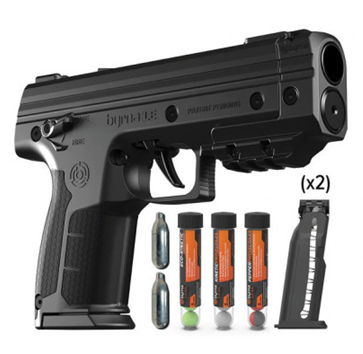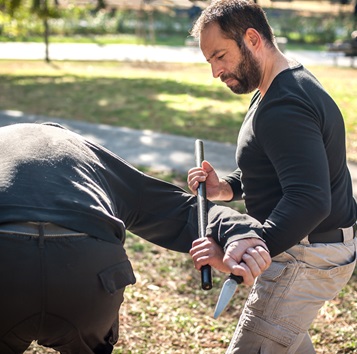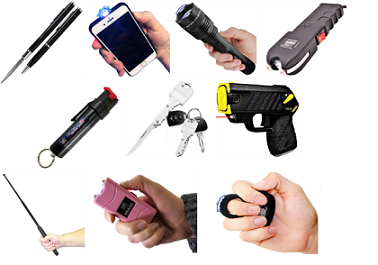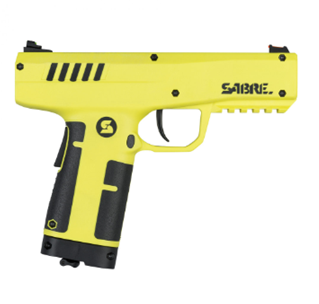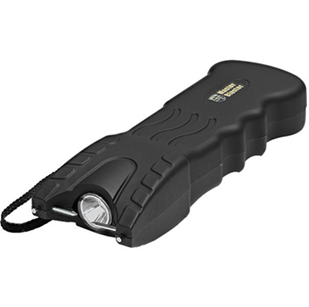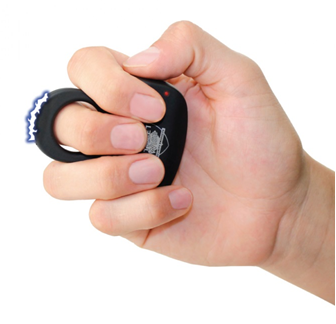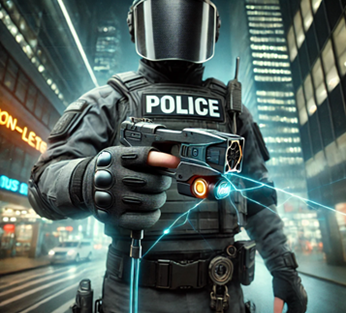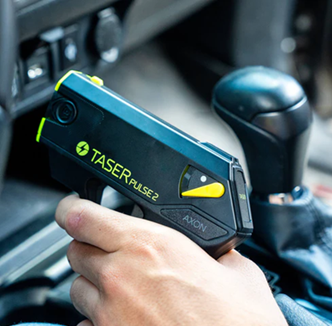Stun Guns 101: How Voltage and Amperage Impact Effectiveness
 When it comes to self-defense, stun guns are a popular choice due to their ability to incapacitate an attacker without causing permanent harm. However, understanding the key electrical components of a stun gun—voltage and amperage—is essential to choosing the right device for your needs. Many people assume that higher voltage means more effectiveness, but amperage plays a crucial role in a stun gun's stopping power. In this comprehensive guide, we will break down how voltage and amperage impact the effectiveness of stun guns and what you should look for when selecting one.
When it comes to self-defense, stun guns are a popular choice due to their ability to incapacitate an attacker without causing permanent harm. However, understanding the key electrical components of a stun gun—voltage and amperage—is essential to choosing the right device for your needs. Many people assume that higher voltage means more effectiveness, but amperage plays a crucial role in a stun gun's stopping power. In this comprehensive guide, we will break down how voltage and amperage impact the effectiveness of stun guns and what you should look for when selecting one.
Understanding Voltage in Stun Guns
Voltage is a measure of electrical potential, or the force that drives the electric current through the body of an attacker. In stun guns, voltage typically ranges from a few thousand volts to several million volts. Manufacturers often advertise high-voltage stun guns, sometimes exceeding 50 million volts, but does higher voltage really make a difference?
Does Higher Voltage Mean a More Powerful Stun Gun?
Not necessarily. While higher voltage allows the stun gun to penetrate thick clothing and reach the skin, it does not directly correlate with effectiveness. A stun gun with extremely high voltage but low amperage may create an intimidating spark and a loud crackling sound, but it won’t necessarily deliver a more incapacitating shock.
Voltage and Penetration
-
Low voltage (below 100,000V): May struggle to penetrate thick clothing but can still be effective on bare skin.
-
Medium voltage (100,000V - 1 million V): Capable of penetrating light clothing and delivering a shock to the skin.
-
High voltage (1 million V - 50 million V or more): Designed to penetrate heavy clothing layers and quickly establish an electrical arc.
However, voltage alone does not determine the stun gun’s stopping power. This brings us to the second and more critical factor: amperage.
The Role of Amperage in Stun Gun Effectiveness
Amperage (measured in milliamps, or mA) is the true measure of the electrical current passing through an attacker’s body. While voltage determines how well the current can reach the target, amperage determines how much electrical energy actually affects the muscles and nervous system.
How Amperage Affects the Human Body
The human body has natural resistance to electricity, but even a small amount of current can have significant effects:
- 1-3 milliamps (mA): Mild tingling sensation with little to no muscle control disruption.
- 3-10 mA: Increasing muscle contractions, pain, and difficulty moving voluntarily.
- 10-20 mA: Strong muscle contractions, loss of voluntary control, and potential difficulty breathing.
- 20-100 mA: Severe pain, temporary paralysis, and incapacitation.
- Above 100 mA: High risk of cardiac arrest, permanent injury, or death.
Most stun guns operate within the 3-5 mA range, which is enough to cause pain, involuntary muscle contractions, and temporary loss of motor control—sufficient to incapacitate an attacker without causing permanent harm. While voltage ensures the electrical current reaches the target, it is amperage that determines the degree of muscle disruption and incapacitation.
Why the Right Balance of Voltage and Amperage Matters
An effective stun gun needs a balance of voltage and amperage:
-
High voltage, low amperage: Creates an intimidating effect and can penetrate clothing, but may not deliver enough current to effectively disable an attacker.
-
Moderate voltage, moderate amperage: Strikes a balance between penetration and stopping power, making it effective for most self-defense situations.
-
Low voltage, high amperage: Can be dangerous and even lethal, making it unsuitable for civilian use.
The best stun guns have a sufficient voltage to penetrate clothing but prioritize a safe and effective amperage level to incapacitate without causing lasting harm.
Common Misconceptions About Stun Gun Power
Myth #1: The Higher the Voltage, the More Effective the Stun Gun
As discussed earlier, voltage is essential for penetration, but amperage is the real game-changer. A 50-million-volt stun gun with only 1 mA of current will not be as effective as a 1-million-volt stun gun with 4-5 mA.
Myth #2: A Stun Gun Will Immediately Knock Someone Unconscious
Unlike what is often portrayed in movies, a stun gun does not instantly knock someone out. Instead, it disrupts their motor functions, making it difficult for them to move, maintain balance, or react.
Myth #3: A Stun Gun Must Be Held Against an Attacker for Several Seconds to Work
While longer contact increases effectiveness, even a quick shock can cause significant discomfort, pain, and disorientation. However, most stun guns work best when held against the attacker for at least 2-5 seconds.
How to Choose the Right Stun Gun for Self-Defense
1. Consider the Voltage-to-Amperage Ratio
Look for stun guns that offer a realistic balance of voltage (1-5 million volts) and amperage (3-5 mA). Avoid gimmicky high-voltage models with negligible amperage.
2. Check the Battery Type and Power Source
Rechargeable stun guns are more convenient and cost-effective, but battery-powered models offer the advantage of being ready to use immediately after purchase.
3. Look for Additional Features
Many stun guns come with added features such as built-in flashlights, alarms, or safety switches. These extras can enhance usability and effectiveness in a self-defense scenario.
4. Ensure Portability and Concealability
A compact, easy-to-carry stun gun is more practical than a large, bulky one. Consider models that fit easily in a pocket or purse.
5. Verify Legality in Your State or Country
Before purchasing, check local laws to ensure that stun guns are legal in your area. Some states or countries have restrictions on civilian use.
How to Use a Stun Gun Effectively
-
Keep it Accessible: A stun gun is only useful if you can reach it quickly in an emergency. Keep it in an easy-to-access pocket or holster.
-
Aim for Effective Areas: Target large muscle groups such as the thighs, abdomen, or shoulders for maximum effectiveness.
-
Apply Firm Pressure: Press the stun gun firmly against the attacker’s body to ensure proper contact.
-
Hold for Optimal Duration: While a quick shock can be painful, holding the stun gun in place for at least 2-5 seconds increases incapacitation effects.
-
Be Ready to Escape: A stun gun buys you time to get away. Once the attacker is incapacitated, leave the area and seek help immediately.
Conclusion
Understanding the role of voltage and amperage in stun guns is crucial to choosing and using them effectively. While high voltage ensures the current reaches the attacker, amperage is what truly disrupts their nervous system and incapacitates them. A well-balanced stun gun provides sufficient penetration while maintaining a safe and effective amperage level.
When selecting a stun gun for self-defense, focus on practicality, ease of use, and legal considerations. By making an informed decision, you can equip yourself with a reliable tool for personal safety while ensuring responsible and effective use.
See cost of stun guns
Company Info
Customer Service
Product Information
- TASER® and Stun Devices Regulations by State
- TASER® Safe Escape Product Replacement Guarantee
- TASER® Comparison Chart
- TASER® User Manuals
- TASER® Warranty Info
- Byrna Product Catalog
- PepperBall Manuals & Spec Sheets
- Pepper Spray Laws
- Air Gun Laws
- States that Restrict Automatic and Butterfly Knives
- Our Print Catalog


























